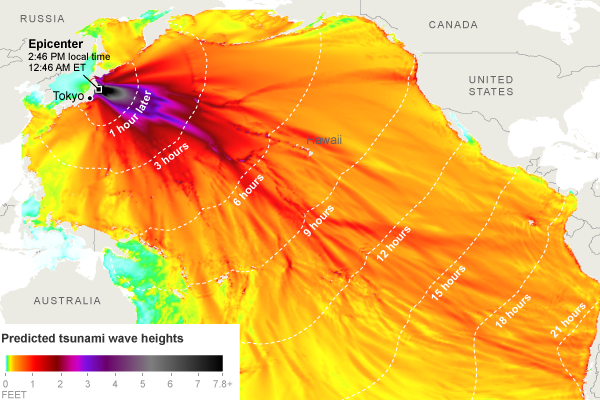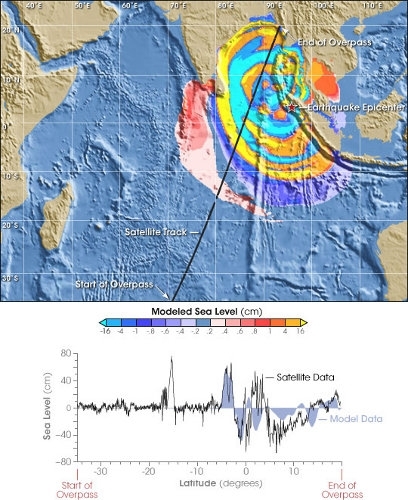How Do Earthquakes Generate Tsunamis?
By far, the most destructive tsunamis are generated from large, shallow earthquakes with an epicenter or fault line near or on the ocean floor. These usually occur in regions of the earth characterized by tectonic subduction along tectonic plate boundaries.
The high seismicity of such regions is caused by the collision of tectonic plates. When these plates move past each other, they cause large earthquakes, which tilt, offset, or displace large areas of the ocean floor from a few kilometers to as much as a 1,000 km or more. The sudden vertical displacements over such large areas, disturb the ocean's surface, displace water, and generate destructive tsunami waves.
The waves can travel great distances from the source region, spreading destruction along their path. For example, the Great 1960 Chilean tsunami was generated by a magnitude 9.5 earthquake that had a rupture zone of over 1,000 km. Its waves were destructive not only in Chile, but also as far away as Hawaii, Japan and elsewhere in the Pacific. It should be noted that not all earthquakes generate tsunamis. Usually, it takes an earthquake with a Richter magnitude exceeding 7.5 to produce a destructive tsunami.
Updated: 19.08.08 Writer: Tammy Kaitoku
 Japanese Tsunami, March 11, 2011. Source: U.S. Geological Survey
Japanese Tsunami, March 11, 2011. Source: U.S. Geological Survey
